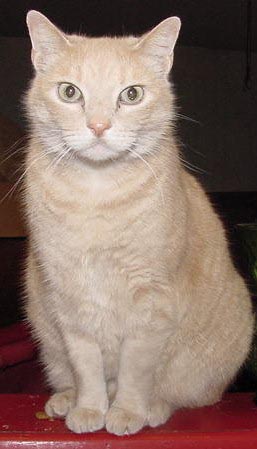 Pet Talk - Pet Health by Dr. Fran Good, DVM Ketchikan, Alaska July 18 2002
The different changes that occur in 'reacting' lungs are edema, smooth muscle thickening, and overproduction and retention of airway secretions. Edema is retention of fluids, and occurs because of a disruption of vascular permeability - fluid that should have been kept in the blood vessels is leaked into the tissues which have no quick way of putting it back. All of the above effects are the result of the degranulation - big word for breaking open and release of granules inside - of mast cells. The granules in mast cells contain histamine, arachadonic acid metabolites - prostaglandins and leukotrienes - as well as platelet-activating factor and bradykinin. Those of you with allergies are probably cringing as you recognize all the mediators of the allergic reactions that make you miserable. Unlike humans, however, the agent primarily responsible for bronchochonstriction is serotonin. If you look at all the things happening in an allergic airway, the overall result is a decrease in airway size. And, dragging you kicking and screaming into airway geometry, airway resistance is proportional to the airway's radius to the fourth power. The reason that this is important is that halving the airway's radius increases the resistance to airflow sixteen-fold. Doesn't take much narrowing of an airway to make it hard to breathe. So what you end up with is exactly what you describe: a coughing, wheezing cat in respiratory distress. And the classic sign of a cat in respiratory distress is one open-mouth breathing. Cats DO NOT PANT. So a cat breathing through his mouth is in distress. The only exception to this is a cat in a seriously stressful situation - like in a crate in strange surroundings, or, briefly in a strange place. But if it doesn't pass, your cat's in trouble, and needs a vet. NOW. The first thing a vet will do is provide what your cat is striving for: oxygen. The other things that could cause these symptoms are heart failure - often a concurrent finding, as cats can have both, making diagnosis tricky - or neoplasia. The easiest ways to rule those out are with XRays. Then the deal is to decrease the inflammation, and the best way to do that is with steroids. Unfortunately, there are some substantial long-term complications to steroid therapy - decreased immune function (why we want it in the first place) leading to increased risk of infection, thinning of skin, especially in the abdomen, resulting in a pot-bellied appearance, hair loss, to name a few - but the good news is that cats do not exhibit these side effects nearly as often or as profoundly as dogs do. The second line of defense is currently bronchodilators, like theophylline, which can be used concurrently with steroids. Other drugs include drugs of the future like Zafirlukast, - a leukotriene antagonist - or immunosuppressives like Cyclosporine - used only for severe life-threatening asthma, but used only rarely as it requires intense clinical monitoring - and Cyproheptadine hydrochloride - a serotonin antagonist of variable efficacy. So those are the treatment options. Some questions that come to mind are: Is your Siamese buddy an outdoor cat? If he is, you might want to try keeping him inside, as his asthma may be triggered by an outside inhalant. Is his asthma seasonal? If it is, maybe keeping him indoors those times of the year may help. Of course, weather doesn't vary much here, but there are definitely blooming seasons. Keep track of when he has problems in a diary, and see if you can find any patterns. Why can't he take the Prednisone? It's cheap, the pills are small, the side effects in cats are few. It's definitely the drug of choice, and there's nothing out there better for the management of feline asthma. If he just doesn't like being pilled, you can stick it into a small - emphasis on the word small, as fat cats are at risk of a terrible disease called hepatic lipidosis, but that's another story - wad of canned food. If he's smart enough to suck up the food and spit out the pill - don't laugh, I had one like that - then you can get a pill crusher and crush the pill and mix it in some soft food. I don't like canned food as a rule, but pilling is the exception to the rule. This one will save his life, so do what it takes. Suffocating slowly is not a nice way to die, or live for that matter, so get those drugs into that boy. If you don't want to hassle with the food, then get a cat piller. It's shaped like a pencil, but it's based on a syringe. Put the pill at one end, tip your cat's head back, quickly put the pill end in the back of his throat and depress the plunger at the other end. It's over in a second, and then you can give him a little treat and a lot of lovin's for being such a sport. Definitely my drug administration route of choice in cats. Ask your vet about theophlylline if Pred's not enough to keep his asthma under control. Also ask about the other drugs, but Pred and the bronchodilators like Theophylline are the treatment avenues of choice right now, and they generally work very well together. Good luck, and let me know
how he's faring! E-mail Dr. Good your comments & pet questions.
Post a Comment -------View Comments
|
||
